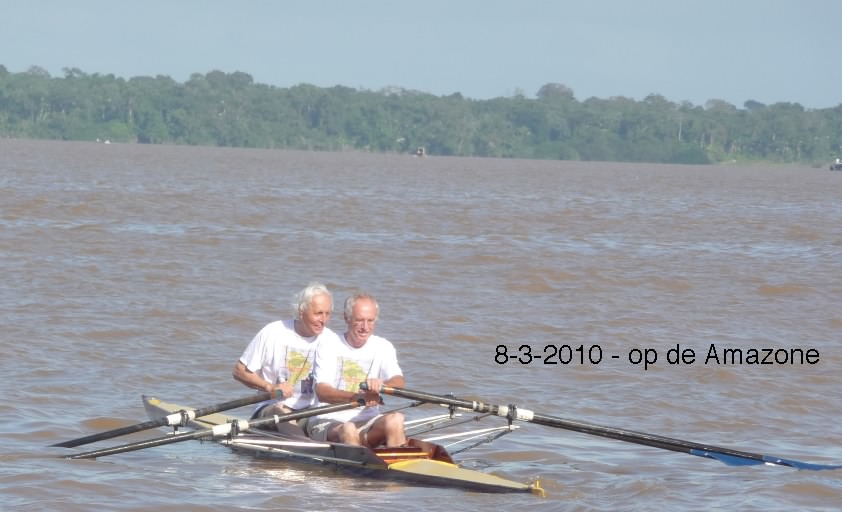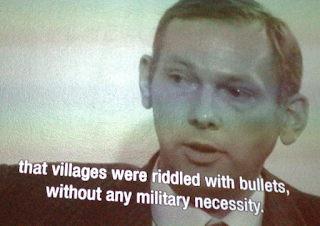Na in Zwitserland twee weken geen krant gezien te
hebben, viel het me bij terugkomst op dat hier de Zwarte Piet discussie weer op
gang was gekomen. Fokke en Sukke hadden, als Zwarte Pieten, geen zin om naar
Nederland te komen, omdat ze er alleen maar zouden moeten DICUSSIËREN. En Marcel van Roosmalen (nrc-columnist Achterpagina; 3
oktober) citeerde: "Jumbo vindt het jammer dat volwassenen in Nederland de
discussie over Piet zo scherp voeren."
Het herinnerde me aan een familiebijeenkomst waar ik
twee volwassenen vroeg of ze ook niet vonden dat Zwarte Piet moest veranderen.
Beiden antwoorden niet maar lieten meteen weten dat ze zo genoeg hadden van "die
discussie". Dat komt waarschijnlijk omdat praten over een racistisch
relikwie nu eenmaal ongemakkelijk is. Je moet ervoor proberen mee te voelen met
zwarte mensen die zich bij ons nog steeds moeten ontdoen van hun
slavernijverleden, óns koloniale verleden.
 |
Er mag niet
getornd worden aan onze traditie: een racistisch relikwie?
Wat dat laatste betreft zal het proefschrift, waarop de
Zwitsers-Nederlandse historicus Rémy Limpach op 15 september 2015 in Bern summa
cum laude promoveerde, voor nog veel meer ongemak zorgen. Het proefschrift is eindelijk
na een jaar openbaar gemaakt, vertaald en zojuist verschenen in een
handelsversie met de beschuldigende titel "De brandende kampongs van
generaal Spoor".
 |
Handelsversie
van Limpach's proefschrift getiteld: " Die brennende Dörfer des Generaal
Spoor. Niederländische Massengewalt im Indonesischen Unabhängigkeitskrieg
1945-1949."
Volgens Martin Witteveen (Internationaal Strafhof in
Den Haag; Opinie-artikel in nrc 5 oktober, pag. 18) erkent Limpach dat hij in
zijn studie niet zowel historisch onderzoeker, aanklager als rechter kon zijn
en dient er dus een vervolgonderzoek te komen. In een dergelijk onderzoek
zouden zowel de slachtoffers als de daders een stem en een gezicht moeten
krijgen (Limpach noemt de namen van de geweldplegers in zijn proefschrift).
In mijn vorige blog van 23 januari 2016, stelde ik dat de door de Nederlanders begane wreedheden verband hielden met en
getolereerd werden dankzij een wijdverspreid superioriteitsgevoel onder de
militairen en bestuurders; een gedurende 300 jaar ingebakken houding van
minachting tegenover de "inlanders".
In een interview met Edwin Ruis (Historiek.)
merkt een genuanceerde Limpach op dat een dergelijke houding in elk geval heeft
geleid tot een grove onderschatting van de tegenstander.
Citaat uit het interview:
"Onder
Nederlandse militairen worden ook de Nederlandse kolonialen, Indo’s en inlandse
militairen van het KNIL gerekend. Waren zij als ‘locals’ meer of juist minder
bloeddorstig dan hun collega’s en leidinggevenden uit Nederland zelf?"
Limpach: "Het aandeel van de KNIL-militairen was
zonder twijfel groot. Maar ook hier kunnen geen harde cijfers worden gegeven.
Wel staat vast dat voor KNIL-militairen in sociaaleconomisch opzicht veel meer
op het spel stond dan voor hun blanke collega’s van de KL uit Nederland.
Bovendien moesten zij in het geval van een Nederlandse nederlaag een
bijltjesdag vrezen. Mede daardoor vochten zij vaak bijzonder fel. Anderzijds
gaven zij bij gevechtsacties vaak de voorkeur aan een zogeheten directe
methode, lees de frontale aanval op de tegenstander met getrokken klewang. Een
KL-getuige vergeleek dit optreden van zijn KNIL-collega’s treffend met een
zwerm op de tegenstander duikende agressieve bijen. De KL-eenheden en de
Mariniersbrigade gaven daarentegen meestal de voorkeur aan de indirecte
methode, lees eerst inleidende beschietingen met zware wapens als artillerie en
vliegtuigen. Deze beschietingen waren vaak onnauwkeurig en niet zelden ook
willekeurig. Daarbij kwamen talrijke Indonesische burgers om het leven.
Bovendien pleegden KL-militairen ook structureel extreem geweld tegen
gevangenen. "
Die "indirecte methode" is mogelijk
toegepast tijdens de "Canonade of
Candi-Karanganyar" (1947, Kebumen) genoemd op de website van Ravie
Ananda. Hierop hoop ik in een volgend blog terug te komen.
English:
After two weeks in Switzerland without seeing a
newspaper, I noticed upon returning that here the debate about "Zwarte
Piet" had started again. In a cartoon of the newspaper NRC, Fokke and
Sukke did not want to come to the Netherlands as Black Peter, because they
would only have to have DISCUSSIONS.
And Marcel van Roosmalen (NRC columnist Backpage, October 3) quoted:
"Jumbo (a store) regrets that adults in the Netherlands conduct the
discussion about Piet so sharply."
It reminded me of a family reunion where I asked two
adults whether they felt that Zwarte Piet had to change. They did not answer
this question, but immediately stated that they were so tired of "that
discussion". This is probably because talking about a racist relic makes
one uncomfortable. You need to try to empathize with black people (mostly from
Suriname) who are with us and still have to get rid of their slave history, our
colonial past.
Concerning the latter, the thesis with which the Swiss-Dutch historian Rémy Limpach doctorated summa cum laude in Bern on September 15, 2015, will provide much more discomfort. The thesis is finally made public after a year and just appeared in a commercial, dutch version with the accusatory title "The burning kampongs (villages) of General Spoor".
According to Martin Witteveen (International Criminal Court in The Hague. Opinion article in NRC October 5, page 18), Limpach acknowledges that in his study he could not be both historical researcher, prosecutor and judge at the same time and that therefore there should be a follow-up study. In such a study both victims and perpetrators should get a voice and a face (Limpach mentions the names of the perpetrators of violence in his thesis).
In my previous blog on January 23, 2016
(http://woldringh-naarden.blogspot.nl/2016/01/decolonization.html) I suggested
that the atrocities committed and tolerated by the Dutch were due to a
widespread sense of superiority among the military personnel and
administrators; an attitude of contempt ingrained for 300 years against the
"inlanders".
In an interview with Edwin Ruis (History. Http://historiek.net/remy-limpach-brandende-kampongs-generaal-spoor/64316/), a nuanced Limpach remarks that such an attitude had at least led to a gross underestimate of the opponent.
Quote from the interview:
"Under Dutch soldiers are also the Dutch
colonials, Eurasians and native soldiers of the KNIL (Royal Army of the
Netherlands-Indies). Were they as locals more or less bloodthirsty than their
colleagues from the Netherlands?"
Limpach: "The contribution of KNIL soldiers was
undoubtedly great, but again no hard figures can be given. However there was
much more at stake for KNIL soldiers in socio-economic terms than their white
colleagues from the Royal Army of the Netherlands (KL). Moreover, they had to
fear a reckoning in the case of a Dutch defeat. Partly because they are often very
fierce fighting. Secondly, in combat operations, they often prefer a so-called
direct method, the frontal attack on the opponent with pulled klewangs
(swords). (...) The Dutch army units and the Marine Brigade on the other hand,
usually prefer the indirect method, read introductory shelling with heavy
weapons like artillery and aircraft. These shootings were often inaccurate and
often too arbitrary, causing many Indonesian citizens to be killed.
Furthermore, KL military committed structurally extreme violence against
prisoners. "
This "indirect method" may have been used
during the "Canonade of Candi-Karanganyar" (1947, Kebumen) mentioned
on Ravie Ananda's website. I hope to come back on this in a future blog.





















